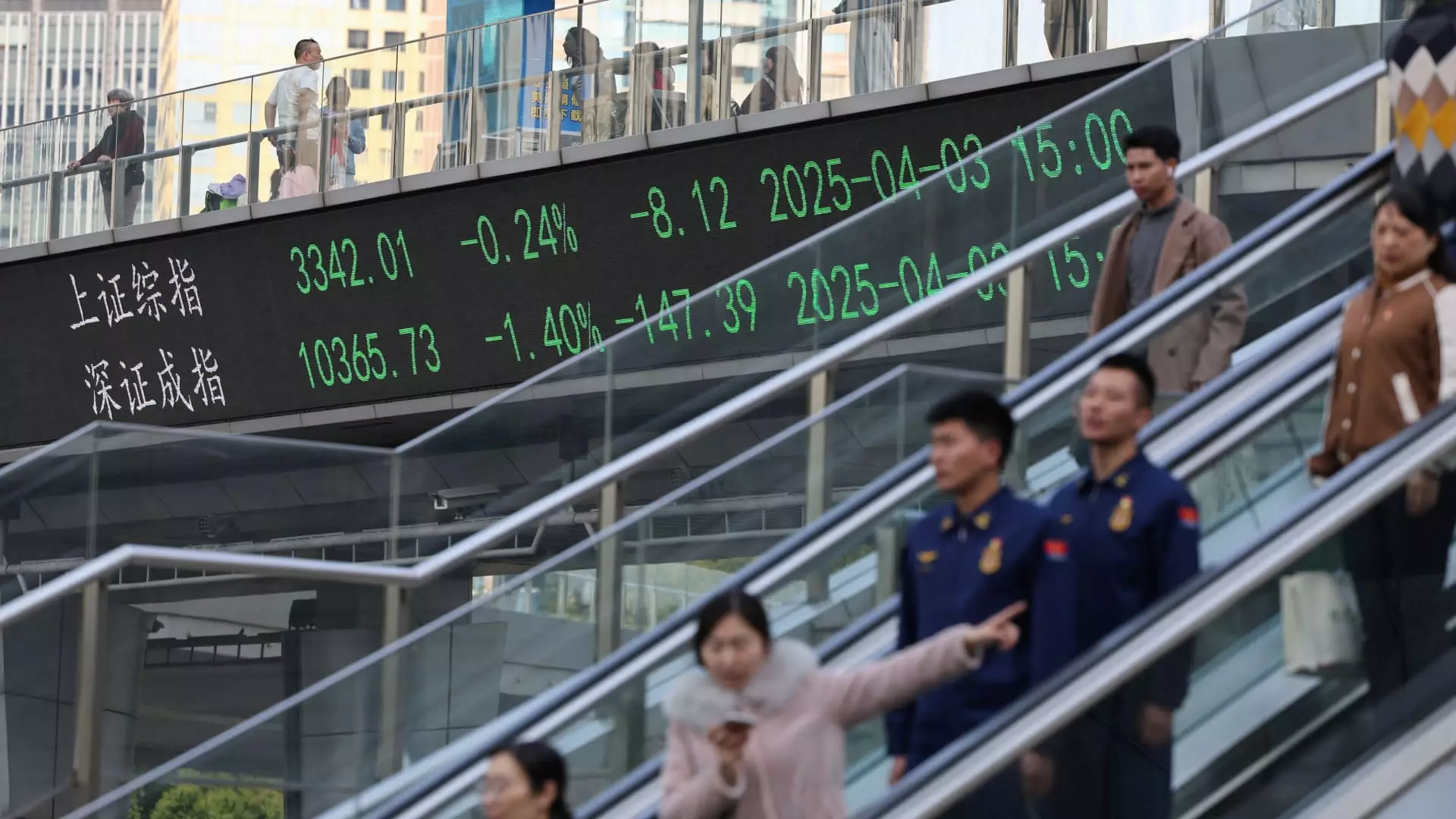In recent months, global investors have found their nerves frayed by an incessant cadence of news surrounding U.S. tariffs targeting China, a storm that rattled many stock markets around the world. Yet, amid this climate of anxiety, it may surprise some to learn that China’s technology sector continues to demonstrate remarkable resilience. While initial market reactions have been negative, with share prices plummeting at the announcement of new policies, the recovery by the day’s end speaks volumes about the underlying strengths within this sector. This unexpected performance challenges the narrative of doom and gloom and provides compelling evidence for investors to reassess their outlook on Chinese technology stocks.
Understanding Market Reactions and Misconceptions
The knee-jerk reactions evident in stock listings often drown out the more nuanced assessments of long-term potential. Analysts like Kai Wang from Morningstar have articulated a viewpoint suggesting that many significant Chinese tech companies possess limited exposure to the U.S. market. Thus, the impact of tariffs may not be as pronounced as initially feared. This sentiment raises crucial questions regarding market dependency and the nature of globalization. Are investors overreacting, or are they accurately anticipating future fallout? The cacophony surrounding tariffs can distort perceptions and mask the burgeoning progress made in sectors deeply rooted in innovation and homegrown technologies.
Value in Valuation: Why Chinese Tech is Undervalued
One striking detail brought to light by Citi’s equity strategists is the glaring disparity in valuations between Chinese tech stocks and those in the U.S. The average price-to-earnings ratio for marquee Chinese firms is 52% lower than that of their American counterparts, notably the so-called “Magnificent Seven.” This data point advocates for a more favorable evaluation of Chinese tech in the face of prevailing political and economic uncertainties. By pushing the narrative that these companies have been devalued by hyperbolic tariff discussions, investors could find lucrative opportunities that simply await recognition and assessment.
Rather than dwelling on the negatives associated with tariffs, stakeholders should reframe their strategy to focus more on the significant upside potential that many of these undervalued stocks present. This undervaluation can serve as an enticing entry point for savvy investors who understand market cycles and are willing to leverage global disparities. The economic fundamentals that underpin these organizations remain intact — if not stronger due to fiscal policy interventions expected from Chinese officials.
Investor Psychology and Shifting Attitudes
What’s truly fascinating is the shift in international sentiment towards Chinese technology. Remarkably, 25% of global investors have adopted a more positive stance on Chinese tech recently, as reported by Citi’s strategists. This renewal of interest indicates not just a fleeting trend, but a deeper-rooted change in confidence. Factors contributing to this shift include advancements in artificial intelligence and a host of other innovations that promise to reshape industries—potentially rendering tariff impacts moot within the broader economic landscape.
One eye-catching example is the emergence of Chinese startup DeepSeek, which recently unveiled an AI model that claims to rival, if not outperform, OpenAI’s ChatGPT. In a landscape rife with obstacles, such audacity illustrates a risk-taking attitude that could pay dividends in the long run. The era of cautious investment is waning, and bold moves could very well define the next wave of growth in technology.
The Silver Lining in Tariff Policies
While the immediate impact of tariffs appears detrimental, the implications could lead to an unexpected reallocation of resources and investment focus. For instance, firms predictable to be affected may shift strategies towards innovation rather than exporting. It’s conceivable that tariffs drive Chinese companies to improve domestic production capabilities, optimizing their business models in the process.
Additionally, sectors deemed less vulnerable to tariffs, such as healthcare, demonstrate the unique ways in which businesses can pivot in adversity. With the exclusion of pharmaceuticals from the latest tariff rounds, firms like Wuxi Biologics could gain an advantageous edge through partnerships, enabling them to operate with efficacious cost structures that challenge their global competitors. Here, the narrative shifts from despair to opportunity—a chance to harness the forces of disruption for advantage.
The Long Game: Evolving Market Dynamics
Ultimately, the turbulence introduced by U.S. tariffs makes way for a reevaluation of global market dynamics and positions China as a player that, while initially destabilized, can emerge stronger. China’s tech landscape is blossoming amidst adversity, led by innovators adapting strategically to shifts in policy and market sentiment. Feathering tariffs into strategic narratives could lead to unforeseen avenues of growth that redefine investor approaches altogether.
This isn’t merely a waiting game for tariffs to diminish; it seems redemption lies in resilience and recalibration, promising a vibrant future for those willing to read the writing on the wall and adapt accordingly.

